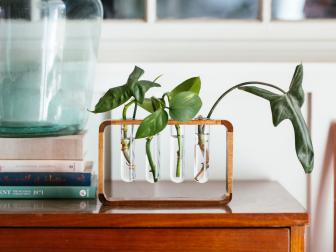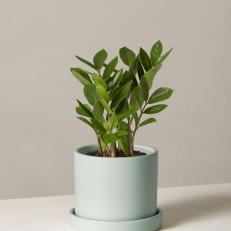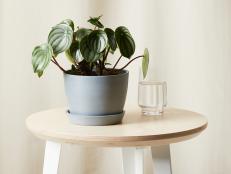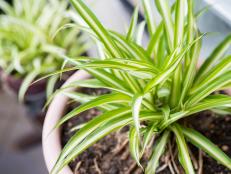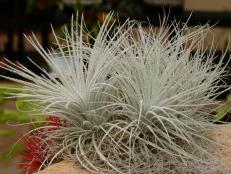How to Care for a ZZ Plant
Weren't gifted with a green thumb? Then this houseplant is for you. ZZ plants provide high-impact looks with little maintenance.

If you're certain you're not blessed with a green thumb, the easy-to-grow ZZ plant might be the plant to try.

You say you can’t grow anything. You don't have a green thumb and you kill every houseplant that dares to enter your house. Have you tried bringing home a ZZ plant?
ZZ — shorthand for the plant’s tongue-tangling botanical name, Zamioculcas zamiifolia — may be the solution for anyone who wishes they could grow something — anything — without much attention and hassle, and better still if it can thrive on neglect. While a ZZ left completely on its own in a dark closet will eventually falter and fail, it is much less fussy and more tolerant of poor treatment than most other houseplants.

ZZ plant does well in low-light conditions and can withstand sporadic watering.
Some background information: As a houseplant, ZZ is relatively new. It is native to East Africa and Tanzania, where it thrives in heat and drought, but has only been widely distributed as a houseplant since the mid-1990s. It grows from a bulbous rhizome, which is where it stores the water it needs to survive its harsh environment.
ZZ Plant Care
As a houseplant, ZZ has become popular because of these survival traits. It’s a slow-growing plant, bearing waxy, oval, dark green leaves on graceful stems that can reach two to three feet in height. It’s attractive in any room setting, but it tolerates a lot of less-than-perfect conditions. It does well in low-light areas, isn’t bothered by low humidity and can survive a forgetful owner’s sporadic watering habits.

Though ZZ plant is a survivor, proper ZZ plant care includes watering it when the top few inches of soil dries out and feeding it with regular houseplant fertilizer a few times per year.
To provide optimal growing conditions, plant ZZ in well-drained soil, place it where it gets a bit of natural light (it also grows well under fluorescent lights) and water it when the top couple of inches of soil dries out. In fact, too much water can cause the leaves to begin to turn yellow, which may indicate that the rhizome is rotting. Feed ZZ with a regular houseplant fertilizer a couple of times a year.
Varieties of ZZ Plants
Most ZZ plants have glossy green leaves, but Raven ZZ plant, Z. Zamiifolia ‘Dowon,’ is a newer variety grown in North America by Costa Farms with dark purple foliage that looks almost black. There is also a dwarf variety, ‘Zamicro,’ which is a bit smaller than the regular variety.
In a decorative setting with other houseplants, ZZ of any size or shade pairs well with tall, strappy snake plant (Sansevieria trifasciata, also known as mother-in-law’s tongue), another high-impact, low-maintenance favorite.
Propagating ZZ Plant
When ZZ outgrows its pot or is large enough to divide, it’s an easy task. Lift the plant out of its pot, carefully separate the rhizomes and replant into clean pots with new potting mix.
How to Propagate Plants
Propagating plants is easy. Plus, learning how to propagate plants can save you money you'd otherwise spend on buying new plants.
You can also grow new ZZs from cuttings. Plant stem cuttings with two leaves in a well-drained potting mix, water lightly and place the cuttings in a warm area where they will receive bright light during the day. Water them occasionally and be patient. ZZ grows slowly, and it may take several months before the new plant shows any sign of rooting.
Like many other houseplants, ZZ has been known to reduce indoor air pollution and removes several organic chemicals — toxins such as benzene, formaldehyde and others — from the air.
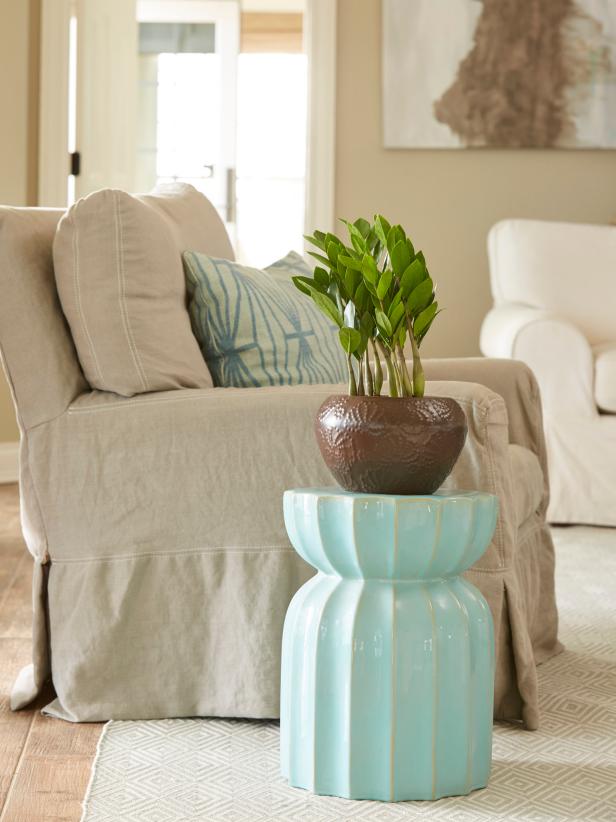
Costa Farms
ZZ plant features waxy, oval, dark green leaves on graceful stems that can reach two to three feet in height.
There is also one note of caution about Z. zamiifolia: All parts of the plant are poisonous, so be sure to keep it out of reach of children and pets who might nibble on it. Some sources advise handwashing after handling ZZ plant to avoid skin irritation.






